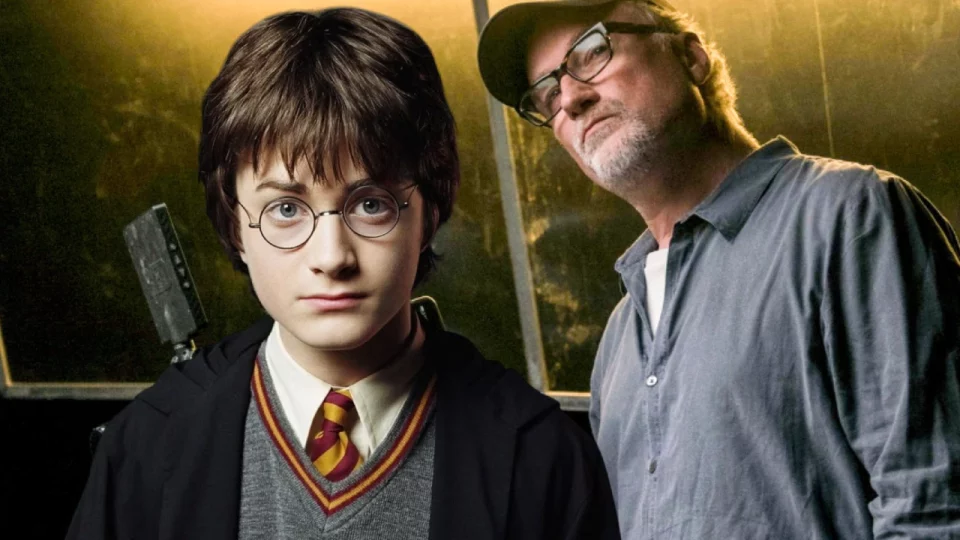David Fincher, renowned for his dark and methodical approach to storytelling, recently revealed a fascinating chapter from his illustrious career. During an interview promoting the 4K re-release of his 1995 thriller Seven, Fincher shared that he once had a meeting with Warner Bros. about directing the Harry Potter franchise. What followed was a pitch that would have reimagined the magical world of J.K. Rowling’s novels in a way no one could have anticipated.
“I was asked to come in and talk to them about how I would do ‘Harry Potter,’” Fincher told Variety. “I remember saying, ‘I just don’t want to do the clean Hollywood version of it. I want to do something that looks a lot more like Withnail and I, and I want it to be kind of creepy.’” Unsurprisingly, his vision did not align with Warner Bros.’ plans, which leaned toward a more traditional, family-friendly adaptation of the globally beloved books.
The potential collaboration never materialized, but the idea of a Fincher-directed Harry Potter remains a tantalizing “what if” for fans of both the wizarding world and the director’s dark, intricate storytelling. Let’s delve into what such a project might have looked like, Fincher’s unique approach to storytelling, and why his pitch for Harry Potter stands as a testament to his artistic integrity.
Table of Contents
Fincher’s Unique Cinematic Style
David Fincher’s career is marked by an unparalleled ability to explore the darker recesses of the human psyche. From the gritty, nihilistic world of Seven to the chilling mind games of Gone Girl, his films are often characterized by their psychological depth, meticulous visual composition, and unrelenting tension. Fincher’s attention to detail is legendary, with the director famously pushing his actors to perform dozens—sometimes hundreds—of takes to achieve his vision.
Fincher’s storytelling often gravitates toward complex, morally ambiguous characters. Whether it’s the obsessive journalists in Zodiac, the scheming Amy Dunne in Gone Girl, or the vengeful Lisbeth Salander in The Girl with the Dragon Tattoo, his protagonists are rarely clear-cut heroes. Instead, they embody shades of gray, navigating a world rife with uncertainty and danger.
It’s not hard to imagine how these qualities might have informed his approach to Harry Potter. The whimsical elements of Rowling’s universe would likely have been tempered by a darker, more atmospheric tone, emphasizing the inherent dangers of the magical world and the psychological toll of Harry’s journey. This approach might not have aligned with Warner Bros.’ vision, but it certainly aligns with Fincher’s artistic sensibilities.
You might also like: Cillian Murphy tipped as potential star in Harry Potter series reboot
A Creepy Vision for the Wizarding World
Fincher’s pitch for a “creepy” take on Harry Potter suggests a departure from the polished, almost idyllic portrayal of Hogwarts seen in the films directed by Chris Columbus, Alfonso Cuarón, Mike Newell, and David Yates. Instead of a world bathed in the warm glow of nostalgia and wonder, Fincher’s Hogwarts might have been a gothic, foreboding place, filled with secrets and shadows.
Drawing inspiration from Withnail and I, a 1987 British black comedy known for its grim humor and bleak atmosphere, Fincher’s version could have leaned into the grittier aspects of life at Hogwarts. The castle’s labyrinthine corridors might have been depicted as eerily quiet, filled with the echoes of centuries-old mysteries. The Forbidden Forest, already a place of danger and intrigue, could have been reimagined as a genuinely terrifying expanse teeming with unseen horrors.
Even the characters might have taken on a more grounded, human quality under Fincher’s direction. Harry, Ron, and Hermione could have been portrayed as flawed, vulnerable teenagers grappling with the weight of their responsibilities and the perils of their world. This approach might have heightened the stakes of their adventures, making their triumphs all the more meaningful.
Why Fincher’s Vision Didn’t Align with Warner Bros.
While Fincher’s concept is undeniably intriguing, it’s easy to see why Warner Bros. opted for a different direction. At the time, the Harry Potter series was poised to become a cornerstone of the studio’s franchise strategy. Rowling’s books had already amassed a massive global fanbase, and a darker, more experimental take on the material might have alienated the family-oriented audience Warner Bros. hoped to attract.
According to Fincher, Warner Bros. envisioned “Thom Browne schooldays by way of Oliver.” This description suggests a more traditional, period-drama-inspired aesthetic, emphasizing the charm and whimsy of British boarding school life. The studio’s eventual choice of Chris Columbus as the director of the first two films reflects this vision, as Columbus’s work is known for its family-friendly tone and heartwarming sensibility.
Fincher’s rejection of the “clean Hollywood version” underscores his commitment to authenticity and creative freedom. He has consistently chosen projects that resonate with him on a personal level, even if they’re not the most commercially viable options. This integrity is a defining characteristic of his career and a key reason why he remains one of the most respected filmmakers in Hollywood.
